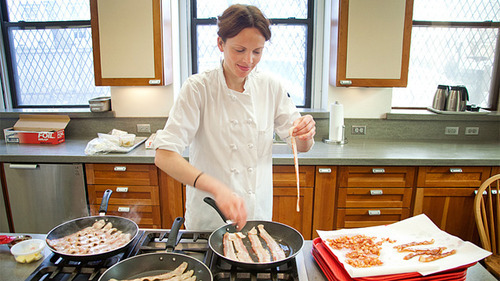Back in April, Andrew and I attempted to make Indian food for the first time… and it turned out awesome! Much better than we expected, haha.
Andrew made Chicken Tikka Masala and I made Palak Paneer. Interesting fact I learned along the way: the difference between palak vs. saag paneer are the greens that are used. “Saag” can be cooked with multiple types of greens, while “palak” is only puréed spinach.
We were nervous how the curries would come out because most of the recipes online seemed… inauthentic? But the most difficult thing about Indian food is that there really are no “true” recipes. When I ask any of my Indian friends how they cook Indian food, it’s always “Oh, a little bit of this spice, add a little bit of that. My mom never wrote it down… Just grab a whole bunch of stuff, throw it together, and usually it’s awesome.”
Thanks Indian friends, that’s really helpful for those of us who did not grow up cooking or eating Indian food.
As I was following the online recipe for palak paneer, I realized what my friends meant. Sometimes, you just had to go off-recipe by adding more cream because the texture did not turn out creamy enough or the spinach needed more spices because the purée was bland. I suppose there’s just so many regional differences or taste preferences that it makes it hard to write down an exact recipe to follow. Just like everyday cooking, I had to make it my own.
The thought of making Indian at home is intimidating for many of us when you can buy a jar of pre-made curry from your local Whole Foods or frozen palak paneer from Trader Joe’s (which is SO yummy), but if you’re feeling adventurous, it’s definitely one of the more challenging (and fun!) cuisines to make at home. Definitely have a lot of respect for Indian chefs who know these recipes inside and out.
Oh, your clothes might smell like Indian food for a while, haha.








